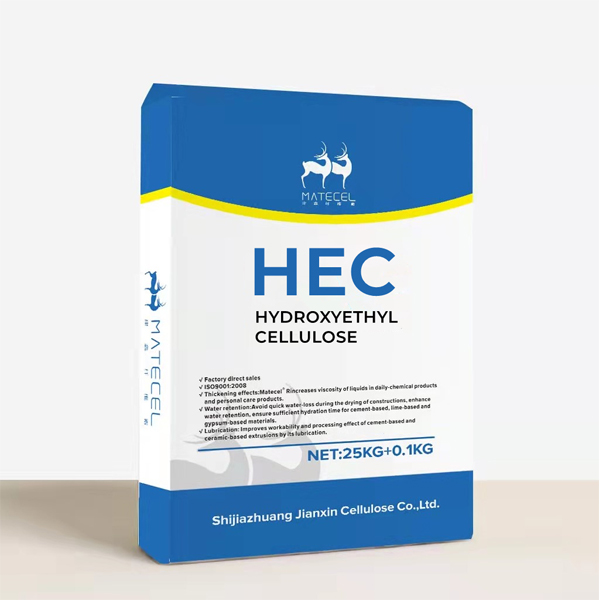Hydroxyethylcellulose HEC is a thickener commonly used in latex paint formulations to increase viscosity. It improves flow and leveling. HEC thickeners also prevent latex paint from settling and delaminating.

●Thickener: HEC is an effective thickener that can increase the viscosity and consistency of paint. This helps prevent the paint from flowing too quickly during application, making it easier to control and apply.
●Rheology control agent: HEC can adjust the rheological properties of the coating, that is, its flow behavior during construction or mixing. This is important for different coating applications and processes to ensure that the coating exhibits ideal flow properties during application.
●Improve adhesion: Adding HEC can improve the adhesion of the coating, making it better adhere to various surfaces, thus improving the durability and stability of the coating.
●Prevent sag: On vertical surfaces, paint tends to sag, but the use of HEC can slow down the flow of paint and prevent sag, thereby ensuring that the paint is evenly distributed on the surface.
Hydroxyethyl cellulose (HEC), as a multifunctional polymer, has some advantages and disadvantages in coatings and other fields.
●Water solubility: HEC is water soluble, which makes it easy to use in water-based coatings and also contributes to the environmental protection of the coating.
●Thickening properties: HEC has good thickening properties, which can effectively increase the viscosity of paint and improve its ability to carry pigments and other additives.
●Rheology Control: The rheology of the coating can be adjusted to make it easier to handle during construction and application, improving the operability of the coating.
●Good adhesion: Adding HEC helps to improve the adhesion of the coating, making it adhere more firmly to the substrate and improving the durability of the coating film.
●Stabilize pigment dispersion: HEC can help stabilize pigment dispersion, prevent pigment precipitation, and maintain paint color uniformity.
●Sensitivity: Under some conditions, HEC may be sensitive to temperature and pH, which may affect its performance.
●Higher Price: HEC is more expensive to produce than some other thickeners, which can make coatings containing HEC relatively expensive.
●May be limited by solubility: At high concentrations, HEC may not dissolve completely in water, affecting its performance.
●Not suitable for solvent-based coatings: HEC is mainly used for water-based coatings and may not be suitable for solvent-based coatings.
When choosing whether to use HEC, consider the requirements of the specific application as well as the formulation and performance needs of the coating.
Contact Us
Related Product
HPMCcellulose ethercellulose manufacturersHow to make HPMC solutionhydroxypropyl methylcellulose (hpmc) powderhydroxyethyl cellulose in paintGrades Of HpmcOEM HPMCHPMC uses in pharmaceuticalscellulose ether manufacturershpmc productsChina HPMChpmc supplierHPMC Solubility ChartHydroxypropyl Methylcellulose Uses In ConstructionDetergent Grade HPMC Blendinghydroxypropyl methylcellulose (hpmc) an overviewhydroxyethyl cellulose suppliersHPMC UsesHydroxypropyl methylcellulose (HPMC) PriceShijiazhuang Henggu Jianxin Cellulose Co., Ltd.
Chemical Industrial Park, Xinji City, Hebei Province, China Post Code: 052360
Copyright 2023 Shijiazhuang Henggu Jianxin Cellulose Co., Ltd. All Rights Reserved